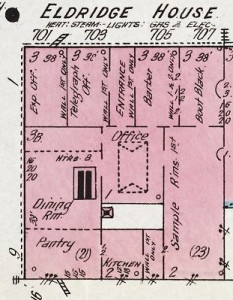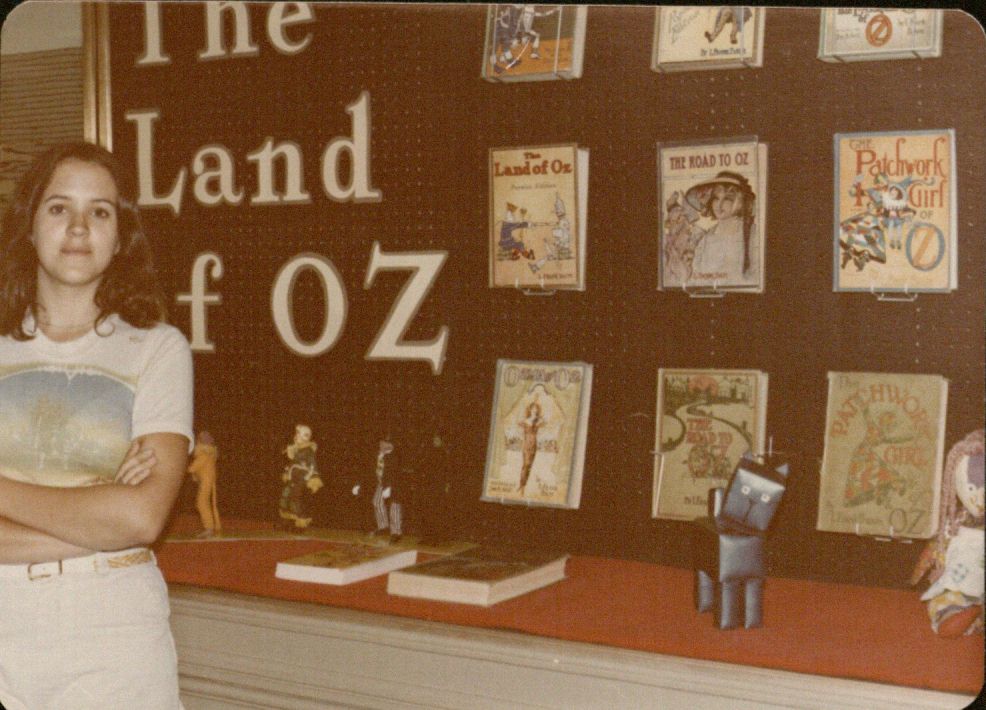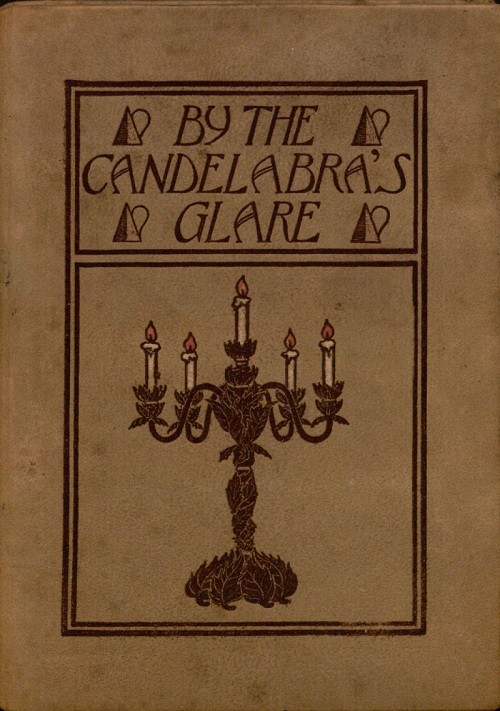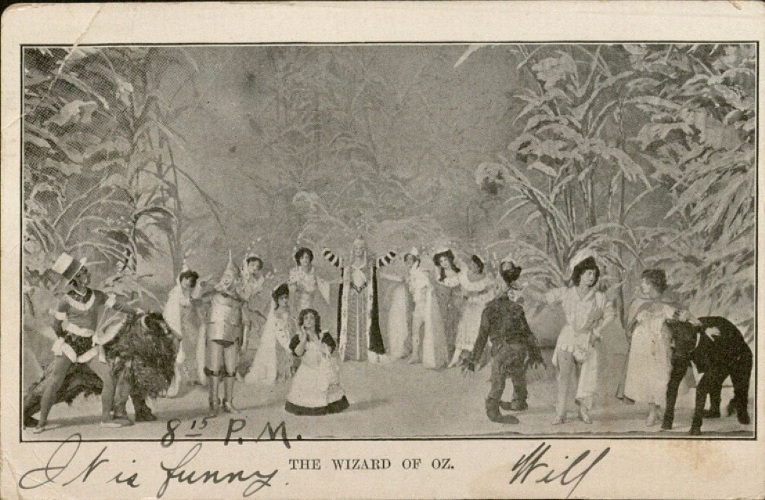Locating a Picture: Finding the Location of the 50th Anniversary Photo of the Quantrill Raid Survivors
January 31st, 2014For my class project in GEOG 658, I attempted to find the backdrop of the 1913 photo of the Quantrill raid survivors using GIS (Geographic Information Systems). The only aspect of the photo that is known is that it was taken in Lawrence. Beyond that, the exact location of this photo is unspecified.
Photograph of survivors of Quantrill’s Raid, Lawrence, KS, August 21, 1913.
Call number RH PH 18 L.8.2ff. Kansas Collection, Kenneth Spencer Research Library.
Click image to enlarge and view.
The photo reveals important information about its location. Judging by the position of the people relative to the central building in the backdrop, the photo was taken at an intersection of two roads. The heights of the adjacent buildings are also visible. Identifying the stories of the adjacent buildings and their sequence from the corner building provides an identifiable skyline to locate using other sources, such as the Sanborn Fire Insurance maps and Google Street View. Sanborn Fire Insurance maps show the relation of the buildings to one another and to the city streets, as well as tell the heights of the buildings. A trolley line is also visible to the left of the buildings.
Detail of Eldridge House plan from the Lawrence, KS Sanborn Fire Insurance Map, 1912.
Massachusetts Street is at the top of the image.
Call number RH Map Sanborn, Lawrence 1912, sheet 4. Kansas Collection, Kenneth Spencer Research Library. Click image to enlarge.
I used GIS software to map the 1910 trolley line onto a modern map of downtown Lawrence and to mark the heights of buildings around each intersection. With this information combined into one map, I was able to narrow down the locations for the photograph.
From this investigation, the most likely location for the 1913 photograph is the Southwest corner of Massachusetts and 7th streets, where the Eldridge stands. This location is at an intersection, was historically located along the trolley tracks, and the building heights of the adjacent buildings appear to match the sequence observed in the historic photo. The 1912 Sanborn Fire Insurance map shows several businesses located on the first floor, including an Express Office, Telegraph Office, and Barbershop. A close look at the 1913 photo shows the advertisements for these businesses.

Details from photograph of survivors of Quantrill’s Raid, Lawrence, KS, August 21, 1913.
Wells Fargo Express Office, Telegraph Office, and Hodges Bros. Hotel Barber Shop.
Call number RH PH 18 L.8.2ff. Kansas Collection, Kenneth Spencer Research Library.
Jennie Ashton
Conservation Student Assistant
Graduate Student, Museum Studies









